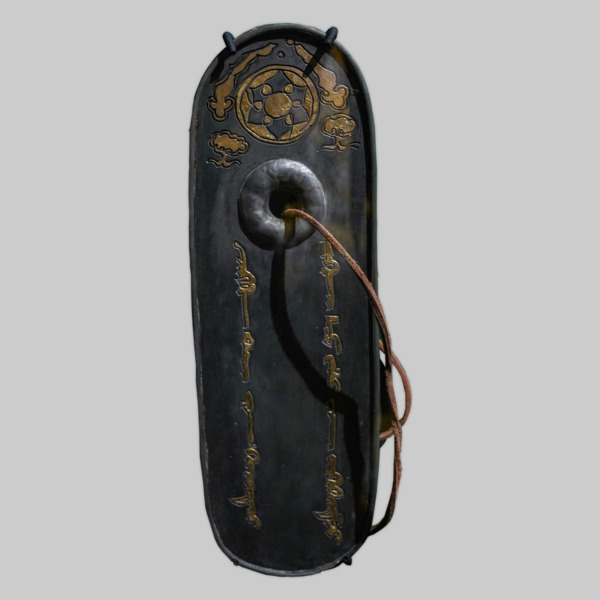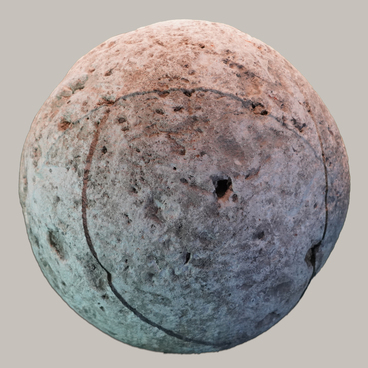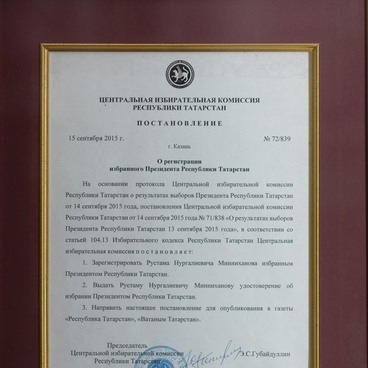The ring, together with the sword of khan Kubrat, was part of the famous Pereshchepina Treasure, which was discovered in 1912 in Ukraine, near the Malaia Pereshchepina Village in the Poltava Province. The finding included over 800 items, which were made by Bulgarian, Byzantine and Iranian craftsmen. In total, archaeologists found 25 kilograms of gold and 50 kilograms of silver.
The original ring was made of gold and had a diameter of 2.7 centimetres. On the ring, the craftsman placed a monogram of the letters of the Greek alphabet, which meant ‘Kubrat’ and indicated the owner of the jewellery.
Khan Kubrat (605–665) was the ruler of the Bulgarian Unnogundurs’ tribe and later became the founder of Great Bulgaria — an ancient state that was located on the territory of modern Ukraine, Russia and the North Caucasus.
Kubrat was born about 605 and as a child lived at the court of the Byzantine emperor in Constantinople. In 632, the khan united several Bulgarian tribes under his rule, achieved independence from the Avars, and formed the state of Great Bulgaria with its capital in the city of Phanagoria. At the same time, he entered into a friendly alliance with the emperor of Byzantium Heraclius and received the rank of patrician from him. After the death of Kubrat in 660, his sons unleashed an internecine struggle, and the Khazars attacked the state. As a result, Great Bulgaria ceased to exist, and its inhabitants fled to other regions.
Part of the Bulgarians (Barsils, Balanjars and part of the Kutrigurs) migrated to the north and formed there a state known as the Volga Bulgaria. The leader of the Onogurs, Asparuh, led his people westward. It was the Bulgarians-Onogurs who later became one of the constituent elements of the future Bulgarian nationality. They mixed with the Slavs and created a state that is modern-day Bulgaria.
The ring was most likely made at a time when Kubrat, who had not yet become a patrician, lived in Constantinople at the court of Heraclius.
The originals of findings from the Pereshchepina Treasure, including the ring of khan Kubrat, are kept in the collection of the State Hermitage in St. Petersburg.
The original ring was made of gold and had a diameter of 2.7 centimetres. On the ring, the craftsman placed a monogram of the letters of the Greek alphabet, which meant ‘Kubrat’ and indicated the owner of the jewellery.
Khan Kubrat (605–665) was the ruler of the Bulgarian Unnogundurs’ tribe and later became the founder of Great Bulgaria — an ancient state that was located on the territory of modern Ukraine, Russia and the North Caucasus.
Kubrat was born about 605 and as a child lived at the court of the Byzantine emperor in Constantinople. In 632, the khan united several Bulgarian tribes under his rule, achieved independence from the Avars, and formed the state of Great Bulgaria with its capital in the city of Phanagoria. At the same time, he entered into a friendly alliance with the emperor of Byzantium Heraclius and received the rank of patrician from him. After the death of Kubrat in 660, his sons unleashed an internecine struggle, and the Khazars attacked the state. As a result, Great Bulgaria ceased to exist, and its inhabitants fled to other regions.
Part of the Bulgarians (Barsils, Balanjars and part of the Kutrigurs) migrated to the north and formed there a state known as the Volga Bulgaria. The leader of the Onogurs, Asparuh, led his people westward. It was the Bulgarians-Onogurs who later became one of the constituent elements of the future Bulgarian nationality. They mixed with the Slavs and created a state that is modern-day Bulgaria.
The ring was most likely made at a time when Kubrat, who had not yet become a patrician, lived in Constantinople at the court of Heraclius.
The originals of findings from the Pereshchepina Treasure, including the ring of khan Kubrat, are kept in the collection of the State Hermitage in St. Petersburg.



